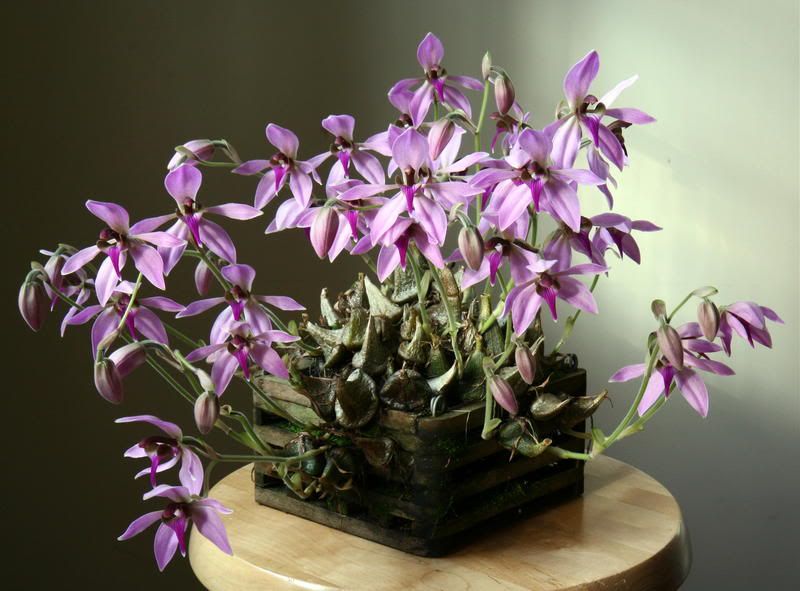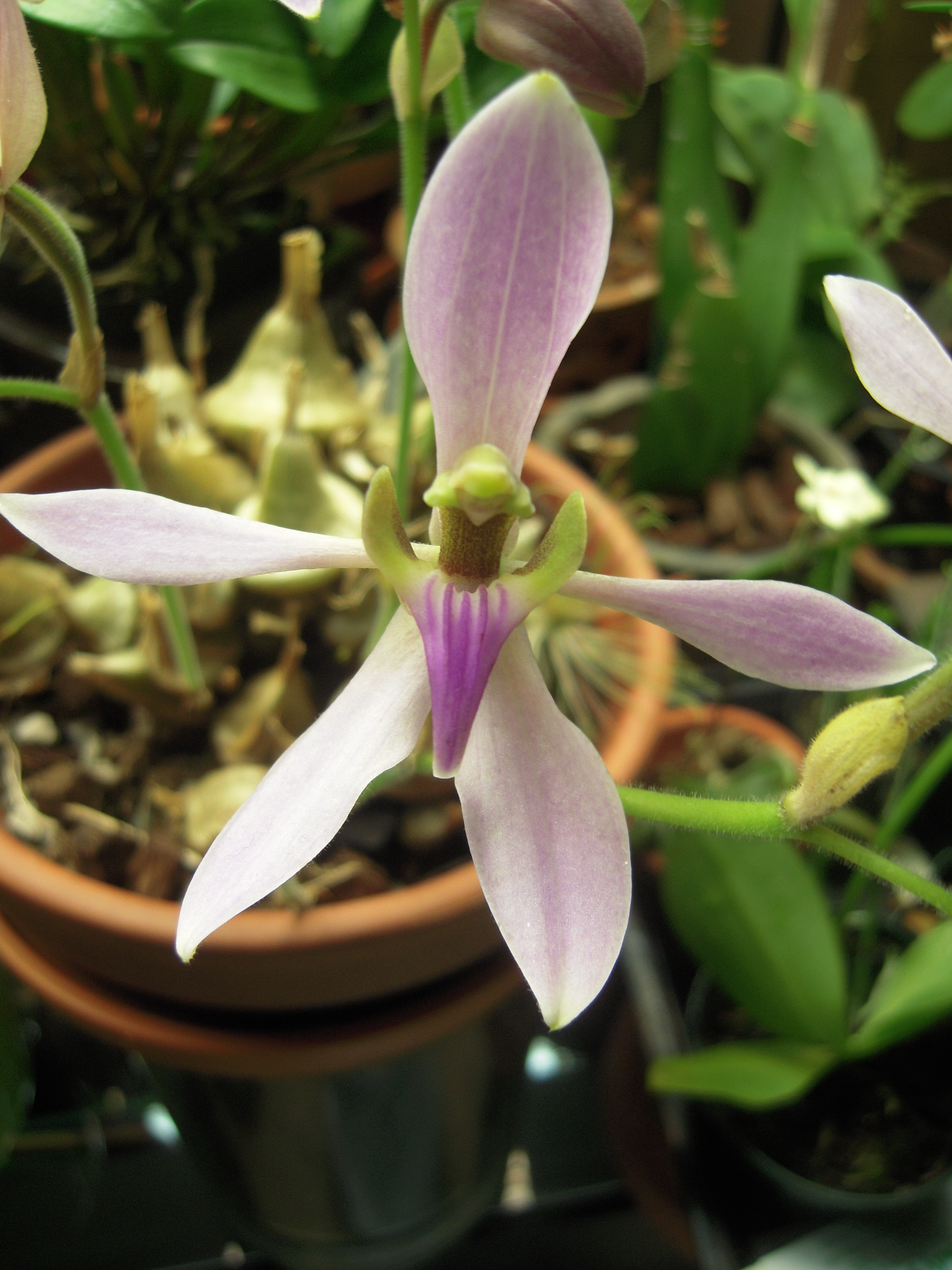Ancistrochilus
Ancistrochilus rothschildianus
Ancistrochilus is a genus of the orchid family ( Orchidaceae). It consists of only two species, which occur in tropical Africa.
Description
The two species of this genus form tightly next to one another rung to roundish or pear-shaped pseudobulbs are thickened. The roots are surrounded by a velamen, which is only one cell layer thick. Below the pseudobulbs are one to two -leaves at the top of the pseudobulbs are one or two leaves. The leaves are oblong - ovate to lanceolate, they end pointed, are of thinner texture and along the prominent veins folded. The leaves fall off after one growing season, the pseudobulbs about take several years.
The upright inflorescence appears at the side of the base of the pseudobulb, when the leaves just unfold. The inflorescence is racemose with one to five flowers. The inflorescence axis and the ovary are hairy, the inflorescence axis carries several bracts. The resupinierten flowers are relatively large, pink or white in color. Except for the lip the petals are in the shape and color similar: they are narrow -ovate to lanceolate and spread widely. The lip is three-lobed, the side lobes are beaten up, the tapered middle lobe is hook-shaped bent downward. At the center of the lip there are three to five longitudinal, dark colored keels. The column is long, curved and winged sides. The stamen contains eight pollinia.
Dissemination
The species of the genus Ancistrochilus are located in tropical Africa. The area covers band shape of West Africa (Guinea, Liberia, Sierra Leone) to Central Africa (Uganda and northern Congo are in the east reached). They grow as epiphytes in the shade moist forests with a short dry season. They are found at altitudes up to 1200 meters.
Systematics and botanical history
Within the subfamily Epidendroideae was the genus Ancistrochilus by Dressler in the tribe Arethuseae and filed there in the subtribe Bletiinae. However, recent studies found a closer relationship with genres such as Collabium and Nephelaphyllum. This group of genera can be summarized in the tribe Collabieae.
The type Ancistrochilus thomsonianus was as early as 1879 described by Reichenbach under the generic name Pachystoma. Pfitzer she put 1889 in the genus Ipsea before Rolfe in 1897 a separate genus, Ancistrochilus aufstellte. The name comes from the Greek words ἄγκιστρον ankistros, "hook", and χεῖλος cheilos, " lip ", together.
The two species of the genus are called:
- Ancistrochilus rothschildianus O'Brien
- Ancistrochilus thomsonianus ( Rchb. f ) Rolfe
Documents
The information in this article come from mainly:
- Isobyl la Croix: The New Encyclopedia of Orchids. Timber Press, 2008, ISBN 978-0-88-192876-1, p 42
- Alec M. Pridgeon, Phillip Cribb, Mark W. Chase ( Ed.): Genera Orchidacearum. Epidendroideae ( Part one ). 2nd edition. 4/1, Oxford University Press, New York and Oxford 2005, ISBN 0-19-850712-7, pp. 120-122.
Furthermore, quoting:








%252520Rolfe_1.JPG)
